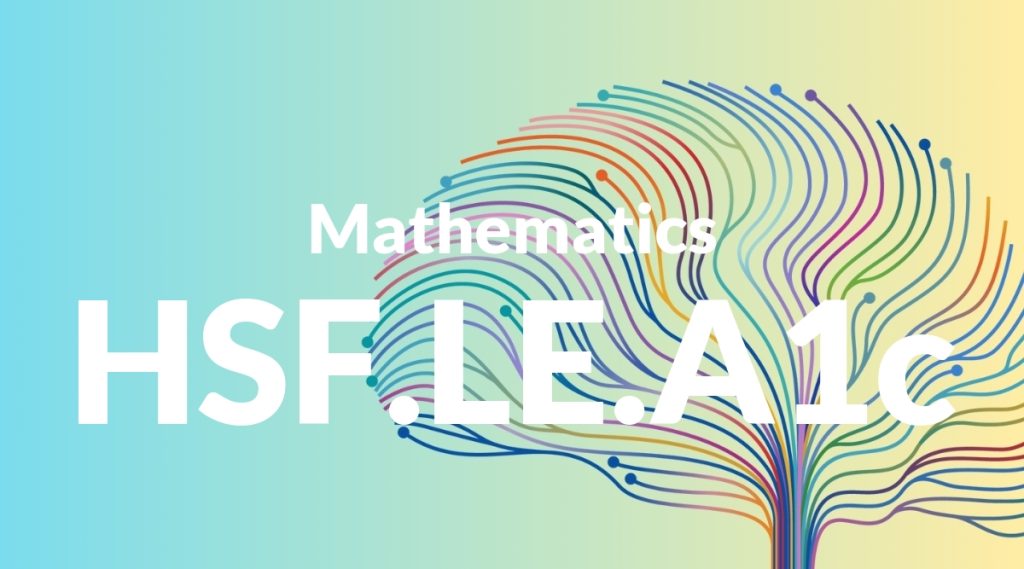Standard: HSF.LE.A1c – Recognize situations in which a quantity grows or decays by a constant percent rate per unit interval relative to another.
Grade level: High School: Functions
Subject: Mathematics
Domain: Linear, Quadratic, & Exponential Models
Teacher Overview
This standard focuses on understanding exponential growth and decay, which are crucial concepts in many real-world applications like population dynamics, finance, and natural processes. Mastering this standard helps students develop a deeper understanding of how different types of functions model real-world phenomena. Students should be comfortable with linear functions, percentages, and basic rate of change concepts. They should also know how to solve simple equations and interpret graphs.
After mastering this standard, students will be able to apply exponential models to more complex real-world problems and will be prepared to explore logarithmic functions and their applications.
Common Misconception 1
A common misconception is that exponential growth means the quantity increases by the same amount each time. In reality, exponential growth means the quantity increases by a constant percentage rate, leading to a much faster increase compared to linear growth.
Intervention 1
To address this misconception, use visual aids and graphs to show the difference between linear and exponential growth. Emphasize the constant percentage rate in exponential growth.
Common Misconception 2
Another misconception is that exponential decay is the same as a linear decrease, where the quantity decreases by the same amount each time. Exponential decay actually means the quantity decreases by a constant percentage rate, which results in a slower decrease over time.
Intervention 2
Provide concrete examples and visual aids to illustrate the difference between exponential decay and linear decrease. Highlight the constant percentage rate in exponential decay scenarios.
Prerequisite Knowledge
Students should have a basic understanding of linear functions, percentages, and the concept of rate of change. They should also be familiar with solving simple equations and interpreting graphs.
Subsequent Knowledge
After mastering this standard, students will be able to apply exponential models to more complex real-world problems, such as logistic growth models and compound interest calculations. They will also be prepared to explore logarithmic functions and their applications.
Instructional Activities
- Graphing exponential growth and decay functions
- Solving real-world problems involving exponential models
- Comparing linear and exponential models through visual aids
- Using technology to simulate exponential growth and decay
- Group activities to identify real-world examples of exponential growth and decay




